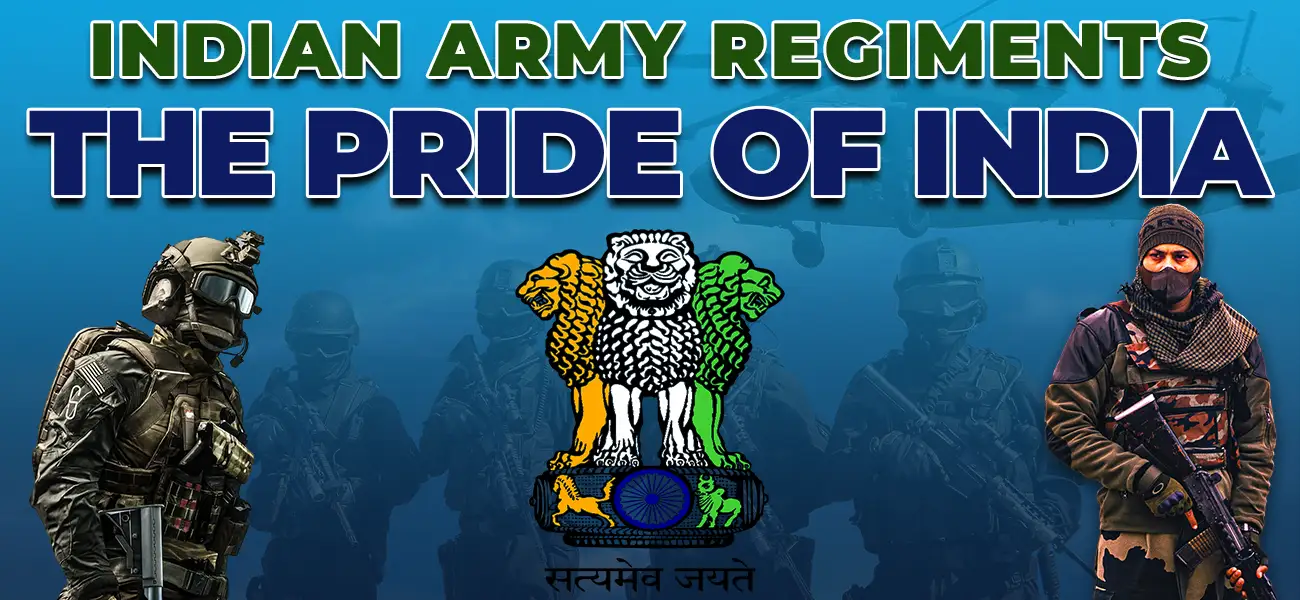Indian Army Regiments: History, Valor, and Their Role in Modern Warfare

The Indian Army, known for its valor and unwavering commitment to the nation, is one of the largest and most formidable forces in the world. At the heart of its strength and tradition lie its regiments. These regiments not only represent the military might of India but also symbolize its rich cultural diversity. In this blog post by the Indian Defence Institute, we delve deep into the fascinating world of Indian Army regiments, their history, structure, and significance.
What Are Indian Army Regiments?
A regiment in the Indian Army is a permanent unit with its unique traditions, history, and identity. Unlike many other armies, Indian regiments often have a cultural or regional association, bringing together soldiers from similar backgrounds to foster unity and camaraderie.
A Glimpse into the History
The concept of regiments in the Indian Army dates back to the British colonial era. Regiments such as the Punjab Regiment, Madras Regiment, and Rajputana Rifles have their origins in the pre-independence period, with some tracing their lineage to the 1700s. Post-independence, these regiments were retained, honoring their legacy while aligning them with the needs of a modern, independent India.
Types of Regiments in the Indian Army
The Indian Army consists of several types of regiments, each serving a specific purpose:
1. Infantry Regiments:
Infantry regiments are the backbone of the Indian Army. They engage in direct combat and are known for their bravery and resilience. Notable infantry regiments include:
- Sikh Regiment: Known for its exceptional courage and discipline.
- Gorkha Regiment: Famous for their motto, “Kayar Hunu Bhanda Marnu Ramro” (Better to die than live like a coward).
- Jat Regiment: Revered for their fighting spirit and heroism.
2. Armoured Regiments:
These regiments specialize in tank warfare, providing critical support in both offensive and defensive operations. Examples include:
- 63rd Cavalry: Army unit known for its rich history, valor, and contributions to armored and reconnaissance operations.
- 61st Cavalry: One of the world’s last remaining horse-mounted units, used ceremonially.
3. Artillery Regiments:
Artillery regiments handle the heavy firepower, using guns, mortars, and rockets to support infantry and armored units. Examples:
- Regiment of Artillery
- Air Defence Artillery Regiment
4. Engineering Regiments:
These regiments are responsible for building infrastructure, clearing obstacles, and supporting combat operations. Examples include:
- Madras Engineer Group (MEG): Known as the “Sappers.”
- Bombay Sappers and Miners
Cultural and Regional Identity
Many Indian Army regiments have deep cultural and regional roots. For instance, the Maratha Light Infantry primarily recruits from Maharashtra, while the Garhwal Rifles represents the bravery of Uttarakhand’s hill people. This system fosters a sense of pride and belonging among soldiers while leveraging cultural bonds to enhance unit cohesion.
Notable Achievements of Indian Army Regiments
Indian regiments have showcased unparalleled bravery in numerous wars and peacekeeping missions. From the Sikh Regiment’s heroics in the Kargil War to the Rajput Regiment’s gallantry in World War II, these units have consistently brought glory to the nation.
Traditions and Customs
Each regiment has its unique traditions, including regimental songs, mottos, and insignias. These elements not only preserve the regimental identity but also inspire soldiers to uphold their unit’s legacy.
Why Regiments Matter
Regiments form the core of the Indian Army’s organizational structure, fostering teamwork and discipline. Their historic achievements, combined with their modern capabilities, make them indispensable to national security.
The Indian Army regiments stand as a testament to India’s rich heritage, diversity, and military prowess. They embody the values of courage, unity, and sacrifice. At the Indian Defence Institute, we salute the brave men and women of these regiments who dedicate their lives to protecting our nation.
